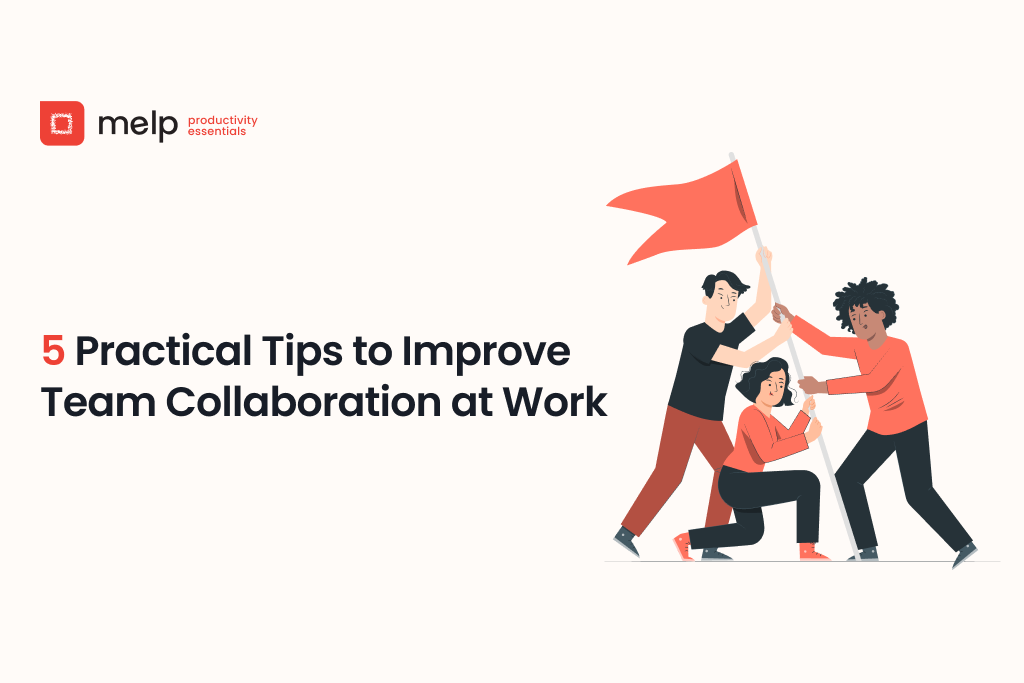
Working together sounds easy on paper, but in real life? It’s rarely that simple. Between missed messages, mixed-up responsibilities, and back-to-back meetings, even the best teams can lose their rhythm.
Whether you’re part of a remote crew or an in-office team, collaboration takes more than just goodwill. You need clear roles, strong habits, and a bit of intention behind how you work together.
Let’s break down five simple, real-life tips that can help teams (of any size) collaborate more smoothly.
1. Set Expectations Before Things Get Busy

Think about the last time something slipped through the cracks at work. Chances are, it wasn’t because someone wasn’t working hard—it was probably just unclear who was supposed to handle it.
That’s where setting expectations early comes in. Before a project gets moving, take a beat to decide who’s responsible for what. Be specific. Not just “Sam handles design,” but “Sam owns the homepage visuals and feedback rounds by Thursday.”
Even better? Write it down where everyone can see it. A shared document, a pinned message—whatever works. That little bit of up-front effort avoids a lot of last-minute scrambling later.
2. Don’t Schedule a Meeting Just Because You Can
Let’s be honest: not every meeting needs to happen. If the goal is just to “touch base,” you might be better off sending a quick update instead.
A real example? One marketing team cut their weekly sync by half when they realized most of their updates were just status recaps. They moved those to a shared doc and saved meetings for decision-making. Team morale went up. So did productivity.
Ask yourself: Is this meeting about solving a problem or making a choice? If not, it might be worth skipping.
3. Make Communication Easy to Follow
When info is scattered across email threads, chat messages, and random notes, things get messy fast. People miss updates. Tasks get done twice. And eventually, frustration builds.
To fix this, keep things simple. Use clear channels for specific topics—like one thread for project updates and another for feedback. Share docs in the same place every time. Keep key decisions visible and easy to find.
Using a tool like Melp team collaboration software makes things much easier. It combines chats, file sharing, project updates, meetings, a smart calendar for scheduling, and Melp Drive into one organized space—so nothing gets overlooked or lost.
A team I worked with made one change—moving project comments from email to a shared channel—and saw an instant drop in missed deadlines. It doesn’t have to be fancy. Just consistent.
4. Encourage Respect, Even When You Disagree
Great collaboration isn’t about agreeing all the time. It’s about how your team handles disagreement. Can everyone speak up? Can people disagree without things getting weird?
Take a team I joined last year—one of the best things they did was set a rule: all ideas get a fair hearing, but once a decision’s made, everyone backs it. That one guideline helped avoid the usual second-guessing that slows down progress.
Also, give people credit when they do something great. A quick “nice work” in a group chat can go a long way. It builds trust and keeps everyone feeling seen.
5. Trust People to Do the Work Their Way

Micromanaging might feel helpful, but it usually just slows things down. When people are trusted to do their part, they tend to take more ownership and get more done.
A colleague once told me her manager gave her full control over a campaign for the first time. She was nervous, but it ended up being one of her best projects. She said it was the first time she really felt like a leader.
So yes—check in. Offer support. But give your team room to figure things out. That autonomy is where the real magic happens.
Wrapping Up: What Real Collaboration Looks Like
You don’t need a new tool or a complex process to collaborate better. What you do need is a team that communicates clearly, respects one another, and knows what’s expected of them.
Try out just one of these ideas this week. Maybe it’s simplifying your meetings, or maybe it’s finally writing out those project roles. Small steps often lead to big wins.
Better collaboration doesn’t always mean working harder—it just means working smarter, together.
Ready to make teamwork simpler and faster? Try Melp today and bring your entire team onto one smart, organized platform.